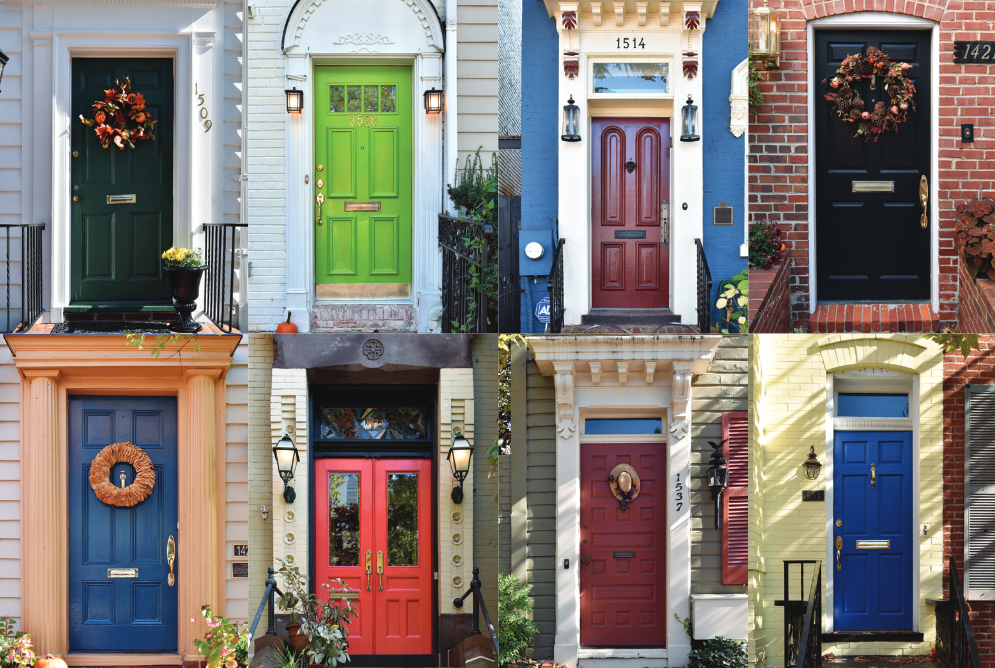Changing Doors in Georgetown
By • November 6, 2019 0 2001

As you can see from the beautiful cover story photos in this issue, one of the greatest pleasures of walking and driving around the historic neighborhood of Georgetown is to view the distinct doors of homes large and small. They are the signature of the residents’ sense of architectural style.
But if a homeowner wants to restore, replace, change or especially redesign a front door entrance in Georgetown, be forewarned: “It’s difficult and very subjective.”
According to Joel Truitt, 83, a contractor who has been doing restoration work — even custom-building front doors — in Washington, D.C., for almost 50 years: “To do anything more than repaint a front door in Georgetown requires a building permit from the DCRA [Department of Consumer and Regulatory Affiars]. That triggers a mandatory review by the District’s Fine Arts Commission. Approval of a new door will depend entirely on which architects sit on the commission’s review panel that day. And they have the final say of Zeus,” he added.
“A new door doesn’t have to exactly match the ones next door, but it has to be compatible with the style of the building and historic neighborhood. Even colors, while broad-ranged, should be fairly traditional in hue — a golden yellow but not neon, for instance. Door jambs, transoms and especially canopies that are highly different from the rest of the area probably won’t be approved. But it’s subjective.”
Truitt should know. He has had to argue hard in a second review for changes that architects
in the first review had firmly suggested.
What happens if a homeowner just goes to Home Depot, buys a beautiful new door (with,
say, a window in the upper half) and installs it?
“That will almost certainly result in a work stop order and at least a $2,000 initial fine,” Pruitt said.
The Old Georgetown Board was the first of the historic review boards in Washington, established in the 1950s. The idea was to preserve by force of law the neighborhood’s historic features. But the OGB has some of the most restrictive regulations in the country, Pruitt told The Georgetowner.
In the 1970s, when Pruitt and other neighbors on Capitol Hill proposed an architectural review board for their area, they were determined not to make the regulations as strict as Georgetown’s. With the help of neighbors who happened to be lawyers, congressional staff members and even a deputy assistant secretary at the Department of the Interior, Doug Wheeler, legislation for a Capitol Hill review board with fewer restrictions was passed by Congress. “It has become the model for historic districts around the country,” Pruitt said.
Georgetown remains special.

